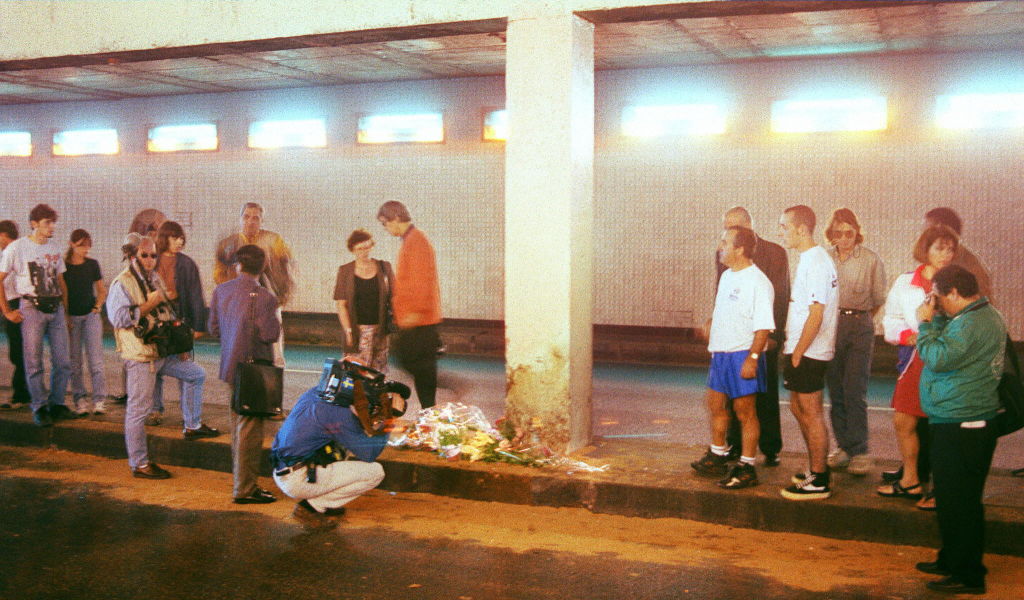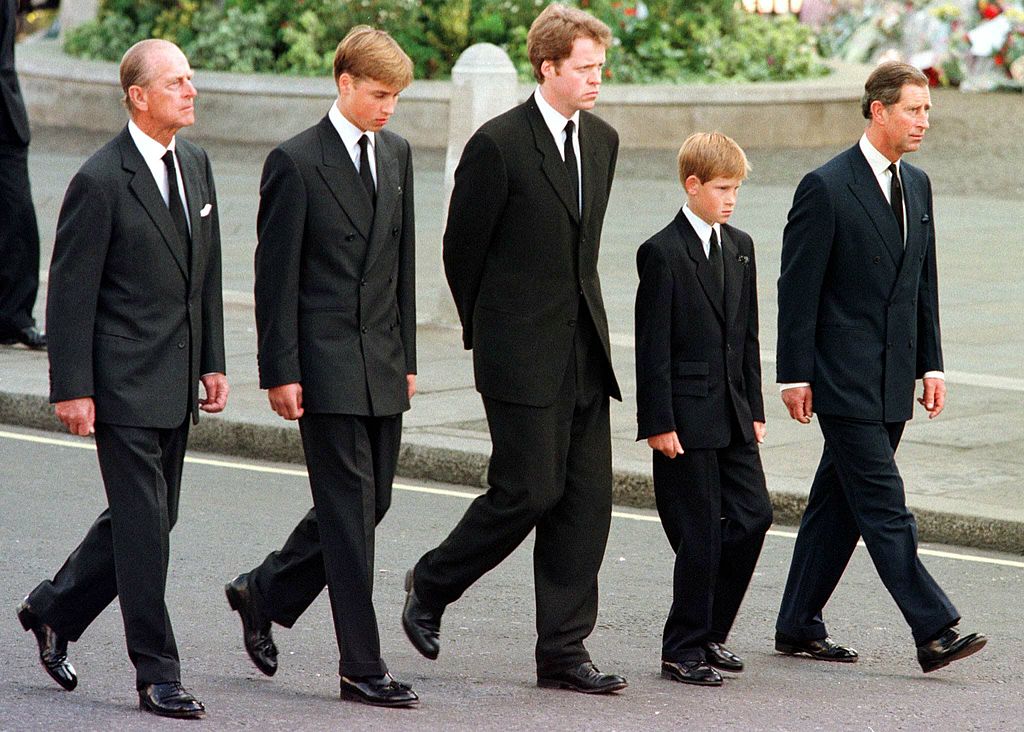Wednesday marks 25 years since Princess Diana’s death thrust not only the British royal family but the entire world into shock and mourning. Diana, then 36-years-old, was a glamorous celebrity known for her advocacy for AIDS patients and land mine removal in developing countries.
She was also one of the English-speaking world’s most well-known women, who millions had watched evolve from a shy 20-year-old wife of the older Prince Charles into a global figure whose legacy spurred major changes to the traditional royal family.
Below, how Diana died and her legacy.
What happened on Aug. 31?
The “People’s Princess” was killed in a car crash in Paris on Aug. 31, 1997. The incident raised scrutiny over the tabloid press’ coverage of her as well as conspiracy theories around the circumstances of her death.
Diana’s boyfriend at the time, Egyptian-born Dodi Fayed, and driver Henri Paul also died in the crash, which occurred as they tried to evade a group of paparazzi on motorcycles, having left the Ritz Paris to go to Dodi’s apartment. Their vehicle had been reaching speeds of more than 60 mph, although the speed limit was 30 mph; the car eventually rammed into a pillar in the middle of a highway.

In the immediate aftermath of the crash, other paparazzi on the scene faced criticism for taking pictures instead of trying to help, according to witness testimony.
Many initially blamed the paparazzi for causing the crash but a French judge cleared them of wrongdoing in 1999. Prosecutors later revealed that the driver, Paul, had a blood alcohol level three times above the country’s legal limit. An extensive 2006 Scotland Yard investigation determined the crash was a “tragic accident.” But in April 2008, a British jury ruled that the driver and paparazzi were both to blame for grossly negligent driving.
That hasn’t stopped wider scrutiny of the press’ role in hounding Diana and her family. Their fascination with Diana was in part due to her colorful and daring fashion style but also because of the ways she broke from royal tradition.
Diana’s close family members have maintained their strong criticism of the paparazzi. Her brother, Charles Spencer, described his sister as “the most hunted person of the modern age”—referring to the press constantly trailing her.
Read More: TIME’s Original 1997 Special Report on Princess Diana’s Death
Fayed’s father, Mohamed al-Fayed, had previously claimed that Diana was pregnant with his son’s child but that has since been disproven by a forensic inquiry. He has also criticized what he says was the royal family’s disapproval of Diana and Dodi’s relationship, citing Dodi’s heritage and Muslim faith.
Diana had publicly discussed her unhappy marriage to Prince Charles, to the Palace’s disapproval, admitting in a bombshell interview with BBC journalist Martin Bashir in 1995 that both had extramarital affairs. “There were three of us in this marriage, so it was a bit crowded,” she said, referring to Prince Charles’s affair with Camilla Parker Bowles. Charles would later marry Parker Bowles in 2005, with Queen Elizabeth II and Prince Philip not in attendance.
Diana and Prince Charles officially divorced in 1996.
The Royal Family’s response
The Queen’s first public address came five days after Diana’s death. “I want to pay tribute to Diana myself. She was an exceptional and gifted human being,” she said in a speech broadcast to the nation. “In good times and bad, she never lost her capacity to smile and laugh, nor to inspire others with her warmth and kindness.”
But the delay in acknowledgement raised scrutiny among some in the British public. Mary Francis, an aide to the Queen, told Newsweek in a 2017 interview that she believed the family was “somewhat slow, perhaps, to recognize the need to step forward in their public role of showing leadership for the country in its grief about the death of the princess.”
Read More: The 5 Biggest Takeaways From HBO’s New Diana Documentary, The Princess
In recent years, Prince Harry, one of Diana’s two sons, has spoken more openly about his grief. “I was so angry with what happened to her—and the fact that there was no justice at all. Nothing came from that. The same people that chased her into the tunnel photographed her dying on the backseat of that car,” he said in the 2021 Apple TV+ documentary The Me You Can’t See.
Princess Diana’s brother, Earl Spencer, told British media in 2017 that he had been lied to by palace courtiers about the two princes, then 12 and 15, wanting to walk behind their mother’s coffin at the internationally televised funeral. It was a “bizarre and cruel thing,” he said, explaining that he had pushed for the duo not to have to do so. He called the procession “the most horrifying half an hour of my life.”
Prince Harry had previously spoken out about how difficult walking behind his mother at the funeral procession was. “My mother had just died and I had to walk a long way behind her coffin surrounded by thousands of people watching me while millions more did on television,” he told Newsweek in a 2017 interview. “I don’t think any child should be asked to do that, under any circumstances. I don’t think it would happen today.” He later, reflecting on the occasion, said that he was “very glad” to have been part of the day.

The relationship between Diana and the paparazzi
The British paparazzi earned a reputation for closely following Diana’s every move; she was one of the most photographed people in the world and snapshots of her could sell for lucrative prices—hundreds of thousands of dollars a piece.
In 1993, Diana sued Mirror Group Newspapers for publishing pictures of her working out in a gym. She also spoke openly about her disdain of being endlessly pursued by paparazzi; once, yelling out to a photographer who took a picture of her leaving a movie theater in 1993: “you make my life hell.”
Read More: The Princess and the Paparazzi: How Diana’s Death Changed the British Media
At a speech in December 1993, Diana said that she knew starting a public life would entail media attention but she didn’t realize just how much of her private life would be scrutinized, too. “I was not aware of how overwhelming that attention would become. Nor the extent to which it would affect both my public duties and my personal life, in a manner that’s been hard to bear,” she said.
A 1997 Gallup poll found that 43% of Brits thought photographers were “extremely” responsible for the accident that led to Diana’s death, compared to 33% who assigned the same level of blame to the driver.
A more recent 2018 YouGov poll found that Princess Diana is Britain’s most mourned public figure, a sign of her lasting legacy a quarter of a century after her death.
More Must-Reads from TIME
- Caitlin Clark Is TIME's 2024 Athlete of the Year
- Where Trump 2.0 Will Differ From 1.0
- Is Intermittent Fasting Good or Bad for You?
- The 100 Must-Read Books of 2024
- Column: If Optimism Feels Ridiculous Now, Try Hope
- The Future of Climate Action Is Trade Policy
- FX’s Say Nothing Is the Must-Watch Political Thriller of 2024
- Merle Bombardieri Is Helping People Make the Baby Decision
Write to Sanya Mansoor at sanya.mansoor@time.com